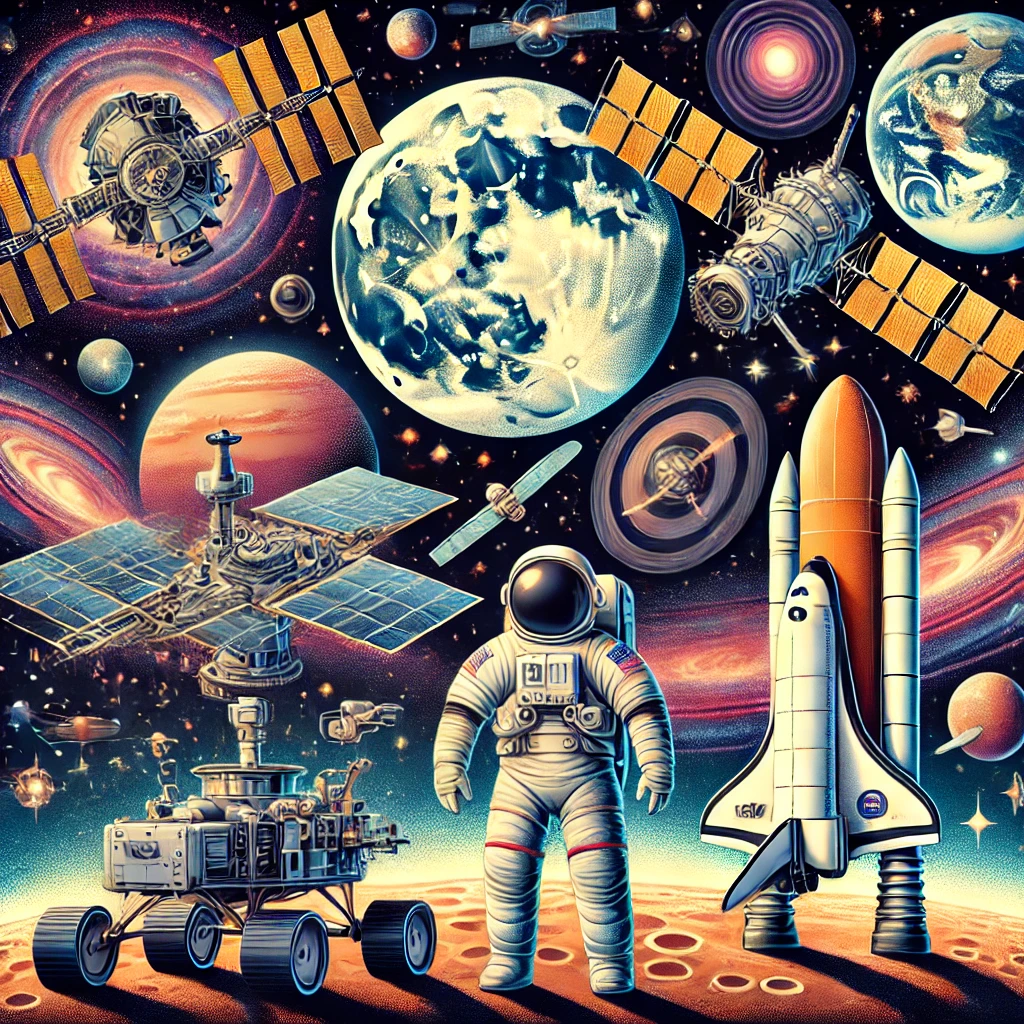7 Interesting Facts About Space Exploration
1. First Human in Space
Yuri Gagarin, a Soviet astronaut, made history on April 12, 1961, by becoming the first human to travel into space. He orbited the Earth once aboard the Vostok 1 spacecraft, a mission that lasted 108 minutes from launch to landing. Gagarin’s successful flight marked a significant milestone in the Space Race between the Soviet Union and the United States, showcasing Soviet prowess in space technology and exploration. Gagarin’s achievement paved the way for future human spaceflight and is celebrated annually as Yuri’s Night.
2. Moon Landing
On July 20, 1969, Neil Armstrong and Buzz Aldrin became the first humans to set foot on the Moon during NASA’s Apollo 11 mission. Armstrong’s famous words, “That’s one small step for man, one giant leap for mankind,” marked a monumental moment in human history. The Apollo 11 mission demonstrated the feasibility of manned lunar landings and fulfilled President John F. Kennedy’s goal of landing a man on the Moon and returning him safely to Earth. The mission also provided valuable scientific data and samples from the Moon’s surface.
3. Mars Rovers
NASA’s Mars rovers, such as Curiosity and Perseverance, have revolutionized our understanding of the Red Planet. Launched in 2011 and 2020 respectively, these rovers have explored Mars’ surface, analyzed its geology, and searched for signs of past microbial life. Curiosity’s discoveries include evidence of ancient water flows, while Perseverance is focused on astrobiology and collecting samples for future return to Earth. These rovers are equipped with advanced instruments and have transmitted a wealth of data back to scientists, helping to unravel the mysteries of Mars.
4. Hubble Space Telescope
Since its launch in 1990, the Hubble Space Telescope has provided some of the most detailed images of the universe ever captured. Positioned above Earth’s atmosphere, Hubble has a clear view of distant galaxies, nebulae, and other celestial objects. Its observations have led to numerous discoveries, such as determining the rate of expansion of the universe, identifying exoplanets, and capturing the life cycles of stars. Hubble’s contributions have greatly enhanced our understanding of the cosmos and inspired countless scientific studies.
5. International Space Station
The International Space Station (ISS) is a collaborative project involving space agencies from the United States (NASA), Russia (Roscosmos), Europe (ESA), Japan (JAXA), and Canada (CSA). Orbiting Earth at an average altitude of about 408 kilometers (253 miles), the ISS serves as a unique laboratory for scientific research in microgravity. Experiments conducted on the ISS cover a wide range of disciplines, including biology, physics, astronomy, and materials science. The ISS also plays a crucial role in preparing for future long-duration space missions, such as those to Mars.
6. Voyager Probes
Launched by NASA in 1977, the Voyager probes (Voyager 1 and Voyager 2) are among the most successful and long-lasting missions in space exploration history. Voyager 1 entered interstellar space in 2012, followed by Voyager 2 in 2018. These probes have provided invaluable data about the outer planets and their moons, as well as the heliosphere—the bubble-like region of space dominated by the Sun’s influence. Voyager 1’s famous “Pale Blue Dot” photograph of Earth, taken from a distance of about 3.7 billion miles, highlights the vastness of space and our place within it.
7. Reusable Rockets
The development of reusable rockets by companies like SpaceX has revolutionized space travel by significantly reducing its cost. SpaceX’s Falcon 9 rocket, which features a reusable first stage, has successfully landed and been reused multiple times. This innovation allows for more frequent and affordable access to space, enabling a new era of exploration and commercial opportunities. Reusable rockets are a critical step towards sustainable space exploration and play a key role in plans for future missions to the Moon, Mars, and beyond.
These seven facts highlight the incredible achievements and ongoing advancements in space exploration, showcasing humanity’s relentless pursuit of knowledge and discovery.




